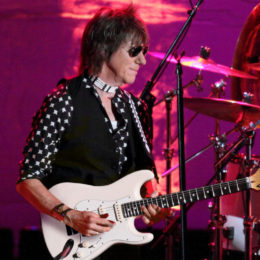
Have you ever wondered why some songs are hits while others never quite make it? Have you wondered if there is a standard formula for a hit? If you’ve followed my Big Picture music production blog (http://bobbyowsinski.blogspot.com), you know that I’ve posted in-depth analyses of hit songs from various music genres, and I’m here to tell you that there certainly are common traits among hits, and these traits occur more often than you’d think.
These x-rays of the hits have become so popular that it has resulted in a book series called Deconstructed Hits, where each book looks at the hits of different genres, from classic rock to modern rock, country, pop and hip-hop, and that’s where a lot of the following information comes from. You’d think that there’s not much in common between the genres, but I’m going to explain how the hit tunes that we love to listen to over and over again—regardless if it’s pop, rock, hip-hop, R&B, Swahili marching band or alien space music—all abide more or less by the same rules.
This is extremely important information if you’re a producer, songwriter or arranger––not from the standpoint of following a formula, but helping you to fix a song if it is just not going where you think it should.
The Basics
If we break down a hit into its essence, it revolves around four main pillars: the song form, the arrangement, the production and the mix. The effect of both the mix and the production can be difficult to measure and therefore have their own set of observations (some of which we’ll get to later), so for the purpose of this article we’ll concentrate on the song form and the arrangement, since both are easy to hear so you can easily spot the similarities and differences from song to song.
The Song Form
In my definition, song form means how a song is constructed, which means how the different sections fall together and how the melody and lyrics act within it.
Sometimes there are a lot of different sections to a song and sometimes only a few. Sometimes the melody is strong, but sometimes not. Sometimes the lyrics are profound, and sometimes they’re inane. In any case, a great song form can carry the tune and make it a hit, while a poor or formulaic one can also become a hit with the addition of the following trait...
The Arrangement
The arrangement is how the instrument elements interact with one another within the song, how the elements are layered and where they enter and exit. Regardless of the type of music, every arrangement consists of five major elements:
• The Foundation provides the pulse of the song. This usually comes from the bass and drums, although it could come from any instrument with a lot of low frequency information like a tuba in a marching band (or with the Roots).
• The Rhythm provides the feeling of motion in the song. This could come from a strumming guitar, a piano playing 8th notes, a synth playing an arpeggiated line, or percussion instruments like congas or shakers.
• The Pad provides the glue to the song. This is a long sustaining note or chord that could come from an organ, strings, a synthesizer, electric piano or power chords from an electric guitar.
• The Lead provides the melody of the song. This is usually the vocal or instrument or instruments playing the melody or solo.
• The Fills provide interest. The fills can come from almost any instrument or vocal that’s playing a counter line to the melody, or playing in between the phrases of the lead.
As an example, in a typical rock, pop or R&B song, the Foundation would be the bass and drums, the Pad might come from an instrument playing a sustaining chord, the Rhythm might come from a tambourine playing double time, the Lead from the lead vocal, and the Fills from either a guitar or background vocals answering the lead vocal.
Good arrangers and producers know that having more than five elements playing in the song at the same time is confusing to the listener, so most songs rarely have all five occurring at once. That doesn’t mean that there can’t be more than five instruments playing at the same time though. In most cases, a number of instruments are playing the same part in the same or different registers, and they make up a single element.
Song form and arrangement are tied together by the fact that, in most hits, most sections of the song have a slightly different arrangement from the previous one that keeps the song interesting.Some Examples
Let’s look at how the form and arrangement works in a number of hits, going all the way back to the ‘70s, then comparing them with some that are more recent.











